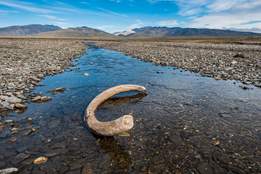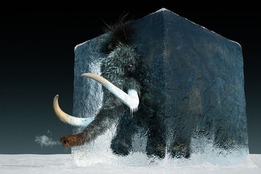-
noun
-
adjective
-
noun
2
-
Synonyms
-
Synonym Chooser
-
Example Sentences
-
Word History
-
Phrases Containing
-
Related Articles
-
Entries Near
-
- To save this word, you'll need to log in.
Synonyms
Noun
- behemoth
- blockbuster
- colossus
- dinosaur
- dreadnought
- elephant
- giant
- Goliath
- jumbo
- leviathan
- mastodon
- monster
- titan
- whale
- whopper
Adjective
- astronomical
- astronomic
- Brobdingnagian
- bumper
- colossal
- cosmic
- cosmical
- cyclopean
- elephantine
- enormous
- galactic
- gargantuan
- giant
- gigantesque
- gigantic
- grand
- herculean
- heroic
- heroical
- Himalayan
- huge
- humongous
- humungous
- immense
- jumbo
- king-size
- king-sized
- leviathan
- massive
- mega
- mighty
- monster
- monstrous
- monumental
- mountainous
- oceanic
- pharaonic
- planetary
- prodigious
- super
- super-duper
- supersize
- supersized
- titanic
- tremendous
- vast
- vasty
- walloping
- whacking
- whopping
enormous, immense, huge, vast, gigantic, colossal, mammoth mean exceedingly large.
enormous and immense both suggest an exceeding of all ordinary bounds in size or amount or degree, but enormous often adds an implication of abnormality or monstrousness.
huge commonly suggests an immensity of bulk or amount.
vast usually suggests immensity of extent.
gigantic stresses the contrast with the size of others of the same kind.
colossal applies especially to a human creation of stupendous or incredible dimensions.
mammoth suggests both hugeness and ponderousness of bulk.
Examples of mammoth in a Sentence
 Irene Wright, Miami Herald, 5 Feb. 2025
The mammoth is one of seven mammoth carcasses found worldwide.
—
Irene Wright, Miami Herald, 5 Feb. 2025
The mammoth is one of seven mammoth carcasses found worldwide.
— Saleen Martin, USA TODAY, 24 Dec. 2024
Saleen Martin, USA TODAY, 24 Dec. 2024
 Jay Ganglani, CNN, 9 Feb. 2025
Once the ship had been steadied, Chahine, who is clearly someone who is never satisfied with just coasting, started the mammoth task to grow NiP into more than just an esports team.
—
Jay Ganglani, CNN, 9 Feb. 2025
Once the ship had been steadied, Chahine, who is clearly someone who is never satisfied with just coasting, started the mammoth task to grow NiP into more than just an esports team.
— Mike Stubbs, Forbes, 8 Feb. 2025
See all Example Sentences for mammoth
Mike Stubbs, Forbes, 8 Feb. 2025
See all Example Sentences for mammoth 

Word History
Noun
borrowed from Dutch mammut, mammuth, borrowed from 17th-century Russian mamant, probably borrowed from a presumed compound in Mansi (Finno-Ugric language of western Siberia), in modern dialects māŋ-āńt, mē̮ŋ-ońt, mā͔ŋ-ont, mā͔ŋ-ā͔ńt, literally, "earth horn," referring to tusks of the wooly mammoth (Mammuthus primigenius) found in arctic and subarctic Siberia
Note: The Russian word mamant, later mamont "mammoth" is first attested as a component of the possessive adjective mamantovŭ, occurring in the phrases mamantova kostĭ "mammoth bone" (1578, in the account books of the Antonievo-Sijskij Monastery in the far north of European Russia) and rogŭ mamantovŭ "mammoth horn" (1609, in a list of Siberian exports). The earliest known Western European reflection of this phrase is apparently in communications from employees of the London-based Muscovy Company. Richard Finch, a member of an expedition to the Pechora River in 1611, wrote in a letter to the company that "… being at Pechora [Pustozersk], Oust Zilma, or any of those parts, there is in the Winter time to bee had among the Samoyeds, Elephants teeth, which they sell in pieces according as they get it, and not by weight …It is called in Russe, Mamanta Kaost" (Purchas His Pilgrimes …The Third Part, London, 1625, pp. 537-38). A more detailed definition is found in a glossary of Russian words collected by Richard James (1591-1638), chaplain to an English embassy to Muscovy, who spent the winter of 1618-19 at Kholmogory, inland from Arkhangel'sk on the White Sea: "maimanto, as they say a sea eleφant, which is never seene, but according to the Samȣites [Samoyeds] he workes himself under grownde and so they finde his teeth or bones in Pechore and Nova Zemla, of which they make table men [chess pieces] in Russia" (B.A. Larin, Russko-anglijskij slovar'-dnevnik Ričarda Džemsa (1618-1619 gg.), Leningrad, 1959, pp. 181-82). Neither of these attestations had any impact on later scientific discourse on the mammoth, or the future of the word in English; James' word book, an important source for early modern spoken Russian, was scarcely known before the 20th century, and not published in its entirety until 1959. More influential were forms somehow transmitted without the n, which first appear in the writing of the Dutch statesman and scholar Nicolaas Witsen (1641-1717). Witsen visited Russia in 1664-65, reaching Moscow, but not the regions where mammoth tusks were found, and the identity of his informant is uncertain. He rendered mamantova kostĭ as Mammotekoos in an incidental reference in his work on shipbuilding (Aeloude en hedendaegsche scheeps-bouw en bestier, Amsterdam, 1671; 2nd edition, 1690). He describes how, on the banks of rivers "in a certain region of Muscovy" ("in zeeker Moskovisch gewest"), waters would expose "heavy tusks, which people judged to be from elephants, washed there at the time of the Deluge and covered with earth; they were called Mammotekoos by the Russians, Mammot meaning in Russian a large terrible beast and koos bone" ("swaere tanden, die men oordeelt van Olifanten te zijn, ten tijde des zuntvloets daar gespoelt en met aerde overstolpt : zy worden by de Russen Mammotekoos genaemt, Mammot is gesegt op Rus een groot vervaerlijck dier en voos [i.e., koos] been" [p. 3]). Witsen added much more information in Noord en Oost Tartarye (1692), a massive compilation on the geography and history of Inner Eurasia; the words are now rendered Mammout and Mammouttekoos, and the tusks reported to have been found most often on the Ob' River in Siberia and the sea coasts ("Aen de Oby en Zee-kusten worden ze 't meest gevonden …"). Witsen's books had very limited circulation. This was not the case, however, with the report of another traveler, the Holstein-born merchant and entrepreneur Evert Ysbrants Ides (1657-1712 or 13), who traversed Siberia in 1692-93 as part of a trade mission to China sent by the Russian tsar Peter. Ides is presumed to have accompanied the tsar to Amsterdam in 1697-98. There, under the auspices, and perhaps editorship, of Witsen, his account of the journey became the book Driejaarige Reize naar China, published in 1704; translations soon appeared in English (1706) and German (1707). Ides spelled the word mammut and mammuth—the latter, adopted in the English translation, most likely the source of the th spelling in English. The ulterior origin of Russian mamant, mamont has provoked much discussion, summarized in Marek Stachowski's article "Das Wort Mammut in etymologischen Wörterbüchern," Folia Orientalia, vol. 36 (2000), pp. 301-14. The Mansi etymology above was first proposed by Michel Heaney, "The Implications of Richard James's maimanto," Oxford Slavonic Papers, vol. 9 (1976), pp. 102-09; it was amplified and corrected by the Uralic specialist Evgenij Xelimskij (Eugene Helimski) in "Rossica: ètimologičeskie zametki," Issledovanija po istoričeskoj grammatike i leksikologii, Moscow, 1990, pp. 30-42. Note that the proposed Mansi compound would exactly parallel the compound jǡ-n'ǡ͔mt "mammoth tusk," literally "land horn," in the Samoyedic language Nenets.
Adjective
derivative of mammoth entry 1
Phrases Containing mammoth
Dictionary Entries Near mammoth
Cite this Entry
“Mammoth.” Merriam-Webster.com Dictionary, Merriam-Webster, https://www.merriam-webster.com/dictionary/mammoth. Accessed 21 Feb. 2025.
More from Merriam-Webster on mammoth
Nglish: Translation of mammoth for Spanish Speakers
Britannica.com: Encyclopedia article about mammoth















Share